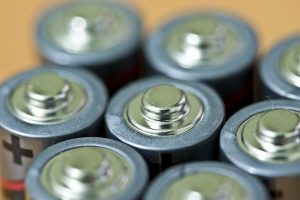 When it comes to the manufacturer’s warranty period and the battery design life, there is a level of confusion. When batteries need to be replaced sooner than expected, failing to last through the entire design life period, which may be five or ten years, a number of questions may arise. Warranty period and design life are different, and it is important to avoid getting the two mixed up.
When it comes to the manufacturer’s warranty period and the battery design life, there is a level of confusion. When batteries need to be replaced sooner than expected, failing to last through the entire design life period, which may be five or ten years, a number of questions may arise. Warranty period and design life are different, and it is important to avoid getting the two mixed up.
To earn Eurobat Classification, all batteries must satisfy the necessary design life standards. As such, a battery, such as SWL3300FR, should be able to last through the period it is designed for if all the optimum operating conditions are met on a consistent basis. Meeting optimum operating conditions consistently is difficult, even though the service life of batteries is related to the working conditions.
Some of the main factors influencing the service life of a battery are discussed below.
Temperature of the Surroundings
Temperature is one of the most impactful environmental factors when it comes to the life of valve regulated lead acid (VRLA) batteries. As a rule of thumb, every 10 degrees centigrade increase in operating temperature cuts the life of the battery in half, based on field and lab observations. Operating a ten year battery at 30 degrees centigrade on a consistent basis will halve its useful life to five years if it is designed to operate at 20 degrees centigrade. The life of the battery will be calculated using the weighted average if temperatures fluctuate between these two values. When VRLA batteries fail to meet their specified design life, irrespective of the manufacturer, the main cause is linked to the operating temperature.
Extent/Level of the Float Charge Ripple
The performance and life of a battery is significantly reduced by excessive ripple on the direct current supply through the battery. Without connecting the battery, voltage regulation across the set up, the load included, should be better than plus or minus 1 percent through 5 percent to 100 percent load, under the state of steady conditions, as a rule of thumb. Where the system’s peak to peak voltage, regulation limits included, is within plus or minus 2.5 percent of the battery’s recommended float voltage, ripple type excursions, transient among others, can be accommodated. The current passing through the battery should not be allowed to reverse into the discharge mode under any circumstances when the battery is operating under float conditions.
Occurrence of Stabilisation Ripples
In cases where the system is stabilised by the battery whenever the requirements of the load are not matched with the rectifier’s capabilities, this type of ripple occurs. The condition which resembles shallow cycling is commonly seen in some static Uninterrupted Power Supply (UPS) systems. Optimum operational conditions should be sought from the manufacturer as normal battery characteristics are no longer applicable in such cases.
Cases of Deep Discharge
The equipment connected to the batteries should be fitted with disconnection features for low voltage, at the user’s discretion. However, in some cases, the use of such features may not be possible; for instance where maximum performance is necessary for safety reasons. Batteries that have undergone a deep discharge may have to be replaced in such cases.
Dead Batteries
The overall set of batteries is bound to be placed under extra stress in case any dead batteries are not replaced immediately. This means that the UPS may be supplying an under- or overcharge to the set. This will reduce the life of each of the batteries in the set in the long term, as they get damaged.
From the above, you can clearly see that the design life simply points to how long a battery might last, considering the many environmental conditions and factors, out of the manufacturer’s and user’s control, influencing the rate of degradation of batteries. In reality, the true operational life of a battery is different from the design life, due to the fluctuating conditions of the operating environment, even though you can expect a ten year design life variant to last longer than a five year design life alternative.